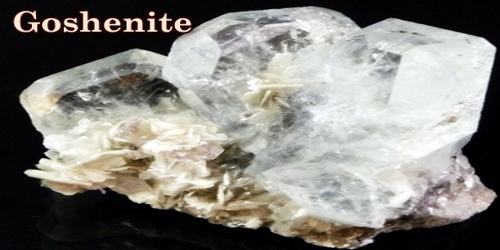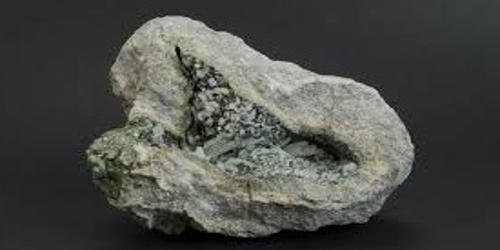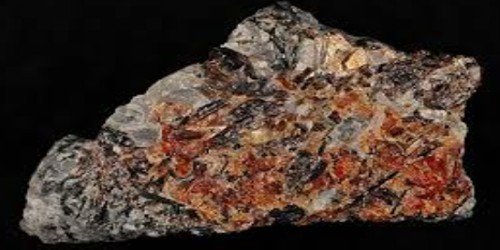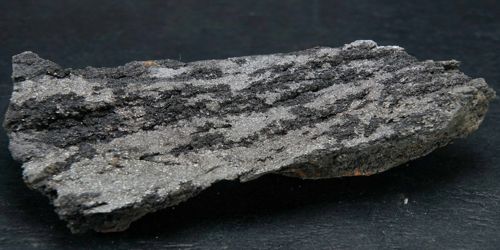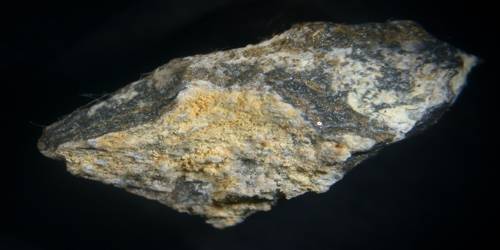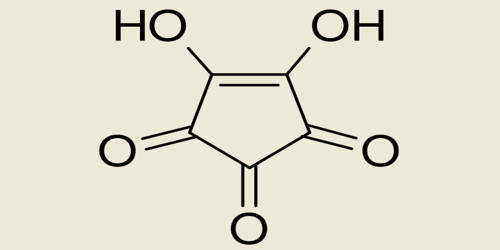Definition –
Goshenite is the purest form of Beryl mineral, which is colorless, free from any kind of impurities. In most cases, color in beryl is caused by trace amounts of certain metals that impart a color. That is often the case for goshenite, but color-inhibiting elements can also keep goshenite colorless. The name originates from Goshen, Massachusetts, where it was originally discovered. In the past, goshenite was used for manufacturing eyeglasses and lenses owing to its transparency. Nowadays, it is most commonly used for gemstone purposes.
Goshenite is often found in large hexagonal crystals with exceptional clarity and transparency. In the Middle Ages these crystals were cut and polished into lenses for hand magnifiers, telescopes, and some of the earliest eyeglasses. With a Mohs hardness of 7.5 to 8.0, these were some of the earliest scratch-resistant lenses.
Goshenite is often called as the Mother of Crystals and is also associated with motherhood. The high frequency and the spiritual guidance that this stone holds offer an honest and clear gaze into oneself. Above all the factors of a human nature, Goshenite especially focuses on the truthfulness and fidelity in relationships.
Some facts about Goshenite:
- The divine qualities of Goshenite have been described in the Irish scriptures. It is a much preferred Irish divining tool.
- It is the stone of people born under the sign of Gemini and Taurus.
- It honours the Roman goddess of justice called the Themis.
- It is considered a shielding stone for those who are traveling.
- Legends say that almost all the minerals of Beryl ward off the evil eyes and spirit.
- Goshenite brings cheerfulness, luck, and unending youthfulness.
Goshenite was once used for the manufacturing of eyeglasses, because of its excellent transparency. Goshenite is also considered an excellent source for beryllium. Goshenite, like all beryl, has excellent hardness, durability, and toughness. It is very resistant to corrosive materials, but goshenite is considered to be quite brittle and sensitive to pressure.
Sources and Properties of Goshenite –
Goshenite was named after a small town in Massachusetts called Goshen, but it is found in almost every part of the world. The significant deposits of Goshenite have also been mined in China, Russia, South America, North America, Africa, Asia, Canada, Mexico, Brazil, and Northern Europe. Brazil is considered to produce the cleanest, largest, and finest quality of Goshenite in the world.

There are a number of different gems that closely resemble goshenite, including quartz, white topaz, white zircon and white sapphire. However, beryl can usually be easily distinguished from other similar gems through basic testing. One of the easiest testing methods to identify goshenite is by testing for specific gravity (density) and hardness. Goshenite is significantly harder than quartz and feldspar, but slightly softer than topaz and sapphire. Beryl, topaz and sapphire all have very different crystal structures, making beryl quite distinct due to its unique six-sided hexagonal crystal formation.
The color of Goshenite can be changed from its colorless form to green, yellow, blue, pink, and yellow. It can be done by adding impurities to the stone. The Goshenite stone belongs to the same family of which Aquamarine, Emerald, Heliodor, Golden Beryl, Red Beryl, and many more belong to. Among all these minerals, only Goshenite occurs in a colorless form.
The gem value of goshenite is relatively low. However, goshenite can be colored yellow, green, pink, blue and in intermediate colors by irradiating it with high-energy particles. The resulting color depends on the content of Ca, Sc, Ti, V, Fe, and Co impurities.
The colorless form of Beryl is known as Goshenite, and it is the purest form of Beryl as it does not contain any form of impurities. Owing to its transparency, Goshenite was earlier used to manufacture the lenses and glasses. In present times, Goshenite is used for the purposes of jewellery making. Goshenite has a good hardness of 7.5 to 8 on the Moh’s scale of hardness.
Uses and Benefits of Goshenite –
Goshenite is sometimes cut into gemstones. These gems are mainly of interest to collectors. They are rarely used in jewelry, because they lack color and their appearance is inferior to other colorless gems such as diamond and white sapphire. Moreover, colored foils were also used to give Goshenite a look of colored gemstones, like emerald and amethyst.

Goshenite has largely been credited for curing eye-related ailments especially short-sightedness. Other than it, Goshenite is also believed to heal headaches, allergies, sinusitis, and insomnia. It helps the person in getting rid of the viruses and infections that affect the immune system by detoxifying and energising the body.
Goshenite is also thought to reduce the exhaustion caused to a person due to over-stress and improves the muscle pain. It is believed to be highly beneficial in overcoming the mood swings, balancing the hormones and fluids of the body, alleviating the troubles of PMS, bipolar ailments, and post-natal depression.
Especially known to heal the crown chakra, Goshenite invigorates and cleans the crown chakra by its magical and grounding properties. Crown chakra is the gateway that connects the body and mind of the person with that of the universe, which is beyond the imagination of the human being. Crown chakra is the fountainhead of the human body that brings in the new ideas, innovations, and imaginations in the human mind, and chuck out the negative thoughts and pessimistic feelings. It balances the grounding and the creative energies in the body.
Information Sources:
